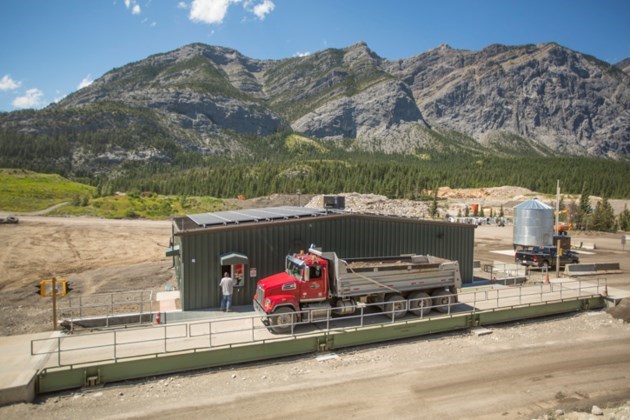BANFF – Local recycling advocates laud the Alberta government’s proposal to transfer recycling costs for plastic, packaging and hazardous household waste from municipalities to producers.
The province has launched consultations on an extended producer responsibility (EPR) program, which aims to reduce waste going to landfills and shift costs and management of recycling to businesses directly producing and consuming goods.
In the case of a small community like Banff, which has a community depot system and not curb-side collection, the benefits to the municipality will depend on the type of EPR model that Alberta goes with.
“In some cases, we might benefit from funding to subsidize the cost of our recycling services,” said Carla Bitz, the Town of Banff’s environmental coordinator for resource recovery.
“But that would really depend on ensuring our contamination rates meet the targets of the program, which will be determined as the program is designed.”
Regardless, Bitz said an EPR program is great news for Alberta as a whole.
She said it will harmonize recycling province-wide, which is important for a place like Banff that sees visitors coming from many different communities.
“Everyone would be used to the same recycling system, whereas right now it’s completely different,” she said.
“For example, you can recycle coffee cups in Calgary and you can’t in Banff, so those things would be more consistent across the province and across Canada.”
Another benefit of an EPR program is the incentives given to producers to better design packaging that won’t end up in the landfill.
“The packaging that can’t be recycled is definitely ending up in our landfill and it is kind of unavoidable landfill waste this time,” Bitz said.
“I think we’re going to see that packaging hopefully changing and then hopefully be able to be recycled, or better packaging design that prevents waste overall.”
With Alberta being one the few provinces without an EPR program, the Town of Banff is also looking for a made-in-Alberta solution based on learnings from other jurisdictions.
“We would be advocating to looking to B.C.’s model, which is 100 per cent producer funded,” Bitz said.
“That’s really saving a lot of costs for municipalities and for taxpayers as well.”
Officials with the Bow Valley Waste Management Commission (BVWMC) say they welcome any program that helps member municipalities improve and finance responsible waste management.
"I suspect that this EPR initiative will initially target general consumer waste streams," said Peter Duck, BVWMC’s regional zero waste coordinator.
“Paper, cardboard and plastics sent from construction sites and general use trade waste bins for burial at the Francis Cooke facility remain a challenge for us."
BVWMC hopes this emerging EPR approach eventually extends to construction material waste streams that the commission handles directly, which by weight, comprises 80 per cent of the waste generated by the Bow Valley economy.
Duck said the commission is successful, with cooperation of its industry partners, at diverting material from landfill through programs at the Francis Cooke Resource Recovery Centre.
“But we continue to struggle to maintain effective markets for the resources recovered at our site,” he said.
“Properly designed EPR or stewardship programs such as established electronics, paint and tire recovery programs have the potential to assist with those challenges, both logistically and financially, by coordinating efforts on a provincial scale.”
According to the Alberta government, a shift to an EPR program would cut emissions by an estimated 72,000 tonnes of carbon dioxide equivalent annually, or the equivalent of taking 120,300 passenger cars off the road each year.
Provincial government figures show Albertans send 1,034 kilograms per person of waste to landfills annually, with packaging and printed paper making up 15 to 20 per cent of waste.
Consultation will occur with municipalities, industry experts and Indigenous communities through stakeholder meetings.
The public will be able to give input through an online survey, which is open until April 30.




